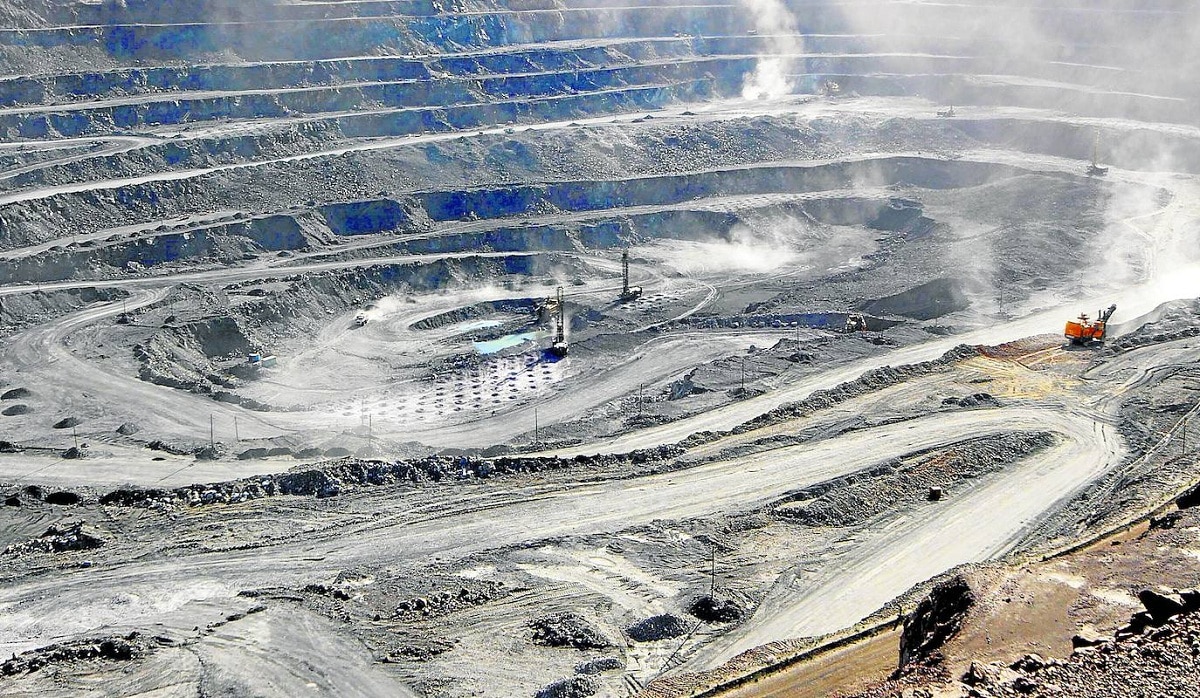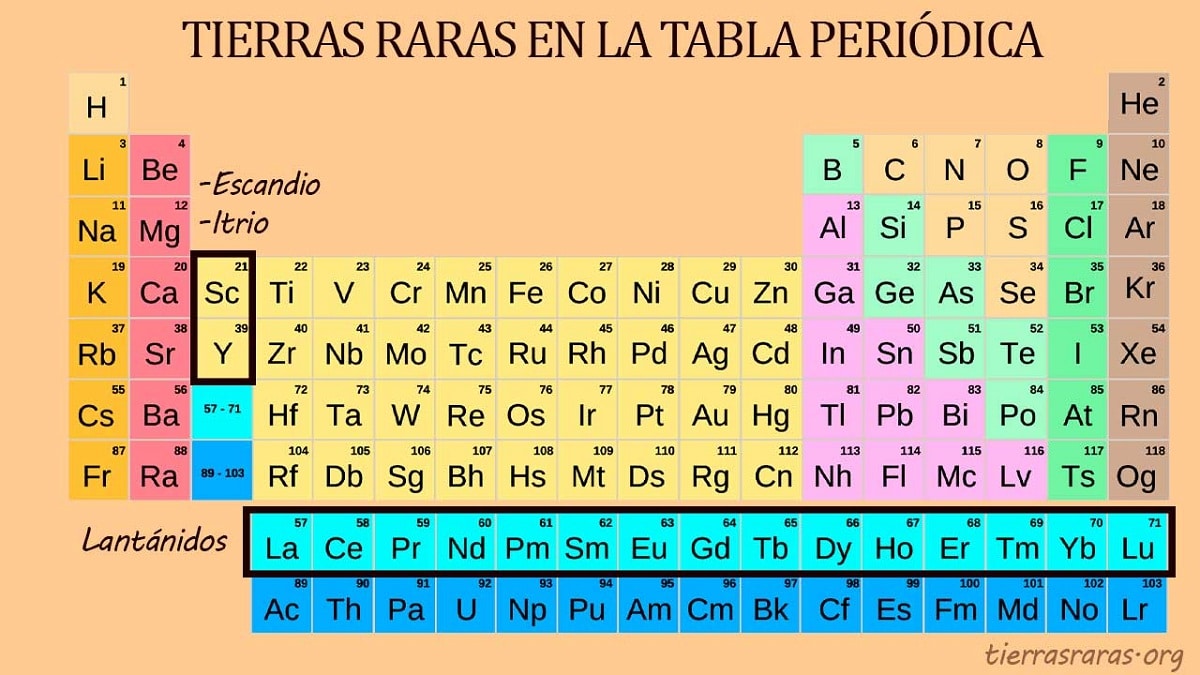
When we look at the elements of the periodic table, many of them remain and are called rare earth. It is at the bottom of the periodic table, and without them our lives would not be the same as we know. Thanks to these rare earths it is possible to manufacture most high-tech devices such as mobile phones, computers, etc.
In this article we are going to tell you everything you need to know about rare earths, their characteristics and importance.
Key features

As we mentioned, these metals are not as rare as their names suggest, but they are difficult to mine. And they do not usually accumulate in minerals. If we combine this rare metal with the demands of high-tech applications, there are all kinds of economic and political complications that make rare earths very interesting.
It is a series of chemical elements that are found in the earth's crust and are critical to many of the technologies we have today. For example, rare earths are used in many consumer electronics, computers and networks, communications, clean energy, healthcare, environmental mitigation, defense, advanced transportation, and more.
They are very famous for their magnetic, luminescent and electrochemical properties. These are unique attributes, and all of these elements help many techniques to not only function efficiently, but also save weight. We can also reduce emissions and energy consumption. This way, we arrive at the current technology with greater efficiency, performance, speed, durability and thermal stability. Products containing rare earth technology help drive global economic growth while maintaining high standards of living and even saving lives.
rare earth properties

Let's look at the rare earths and their properties, we know that they are not particularly rare in terms of their abundance in the earth's crust. However, its unique properties are due to its atomic structure. They have electron configurations that set them apart from other elements on the periodic table. While all rare earths share some important properties, others are more specific to specific elements. They are found together with minerals and rocks and are difficult to separate from each other due to their chemical similarities. This is called chemical coherence.
Rare earths have become very famous for their chemical properties, which are endowed with numerous practical uses. They are specific to specific elements, so the challenge of being able to separate them must be overcome.
In addition to the atomic structure, there are various types of rare earths based on their chemical properties. Size is also a distinguishing feature. The atomic size of lanthanides decreases with increasing atomic number. This causes the lighter rare earths to separate from the heavier rare earths. And both are produced with different minerals.
For example, if we mention lutetium, we find that it can more easily replace other elements in minerals where the available sites are relatively small. Rare earth compounds are usually ironic and very stable. Among the oxides, we find some of the most stable. Most of the lanthanides have a trivalent state.
Rare earth classification

Let's see what are the different classifications by which these elements are divided. The first are the lanthanoids which are classified as light rare earths. Let's see what they are:
- lanthanum
- cerium
- praseodymium
- neodymium
- promethium
- samarium
On the other hand we have the heavy rare earths which are the following:
- europium
- gadolinium
- terbium
- dysprosium
- holmium
- erbium
- tulio
- ytterbium
- lutetium
The only item in the entire list that not found naturally is promethium. We know that all isotopes of promethium are radioactive, so it can only be formed in nuclear reactors. It cannot be found naturally on Earth.
Lanthanides and their importance
Of course, you know about the lanthanides when you have studied the periodic table that makes you curious. These are very common elements in the earth's crust and are often difficult to extract. Not only are they difficult to extract, but they are also used in large quantities. They are usually bright, usually silver. Once exposed to oxygen, they have a lot of this silver color. They are characterized by their high reactivity, and although they are not explosive, they tarnish quickly, which makes them susceptible to contamination by other elements.
We know that not all lanthanides tarnish at the same rate. For example, lutetium and gadolinium can be exposed to air for long periods of time without staining. On the other hand, we have other lanthanides such as lanthanum, neodymium and europium, which are very reactive and must be stored in mineral oil to prevent fogging.
All members of the lanthanide series have an extremely smooth texture. Many of them can be easily cut with a knife and do not require heavy tools for treatment. Elements considered rare earths are not considered because they are hard to find. They are simply considered rare earths because they are difficult to extract in a pure form in quantities sufficient to meet any and all industrial needs. They are useless if the quantities needed to produce technical products cannot be obtained.
These lands have a real danger in the market of becoming dominant products. We know that China has the largest reserves of rare earths and uses them. They are abundant relative to the earth's crust, but in detectable concentrations or less common than most other minerals.
This makes your extraction more valuable. Global demand for rare earths is expected to rise thanks to to use in automobiles, consumer electronics, energy-saving lighting and catalytic converters.
They are key elements because they are unique and irreplaceable and are widely used in green industries (electric vehicles, hybrids, turbines, etc.) to develop elements such as computers, televisions, lasers with multiple applications.
However, the concentration of production in China, which represents more than 90% of the world total, makes these elements particularly sensitive to the geopolitical environment and could lead to a limited supply of vital materials for the European economy.
I hope that with this information you can learn more about rare earths and their characteristics.